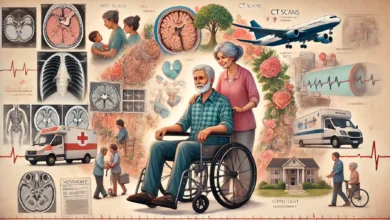Nowhere to Go
When I was first diagnosed with superficial siderosis (SS), there wasn’t much information around. It was a case of rummaging through Google to find things of relevance and chatting to other patients who had been diagnosed with SS. When your doctor needs to reach out to his colleagues in another country, it says a lot about the rarity and lack of knowledge available for SS. For me, it was one of the most difficult parts of the journey; getting an understanding of this rare disease, and how to maintain myself in the best possible way.
A New World
Lots of change was happening in such a small amount of time, and I found the symptoms creeping up on me more quickly than I could grasp an understanding of them. I’d gone from an outgoing socially active person, to being very reclusive and trying to find my feet again once I’d managed to get some stability. I feel very lucky in a way having made it through so many bouts of brain surgery, although somewhat lost as I can no longer carry on doing the things that I once enjoyed.
Livingwithss.com
Throughout my (ongoing) journey, I frequently referred to livingwithss.com as a source of information to help guide my way. It is an invaluable source; and still is to this day. Rori does such a fantastic job running the website providing information from her own experience of helping her husband Gary through this difficult ride. I’ve learned a lot from it; it helped me to plan my own medication regime alongside my neurologist, to understand that I need to push myself to stay mobile, and most of all that I too have a story to tell that could help others along their way.
Superficial Siderosis Research Alliance (SSRA)
In the latter end of 2019 when the SSRA was formed, both founding partners Rori Daniel and Kyle Dempsey acknowledged a huge need for research into superficial siderosis. Whilst I’d managed to find a bit of stability myself, I’d still lost the ability to do many of the things I used to love doing. Getting involved with the SSRA was a must for me as I could help both myself and other superficial siderosis patients. Now that I’m a bit more clued up with superficial siderosis, I can see the benefits that research could help with, and when you consider the other neurological diseases that involve iron deposition, it becomes a much broader field. In my view, there is a lot of scope for research in superficial siderosis.
A New Purpose
Superficial siderosis has taken my hearing, my mobility, my social life, my work life and so much more. The SSRA has given me a new purpose, and I want to give back to help others who are not as fortunate as I am. SS affects everyone differently, but there are a lot of cross of symptoms, and the severity of symptoms may be different for each patient. Yes, I still struggle every day, but I can contribute to this when I am able to, and I am still learning as my personal journey continues, and have much more to give.



